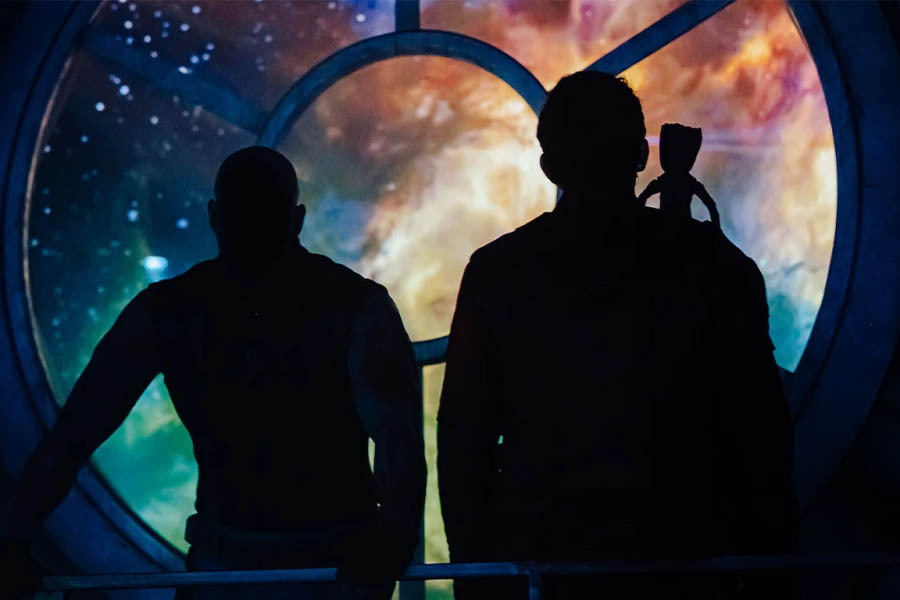Are you delivering enough impact – and making enough money – through your merch?
Making memorable merch isn’t just about dropping a logo on a product. Done right, it can:
- Enhance your audience’s experience
- Embody a memory
- Build social engagement
- Promote your brand to future audiences
- Provide an impactful income stream (ancillary revenue – merch plus food and beverage – can account for 35% of an experience, compared to 34% for ticketing revenue)
However, getting all this right is a balancing act – and mistakes can be costly, wasteful, and time-consuming. So to help you figure out how to maximise your merch strategy, we asked Becky Bevan, former Head of Creative Apparel & Merchandise at Secret Cinema, to share her essential tips for designing covetable, creative and quality products that your audience will love and your bottom line will thank you for.
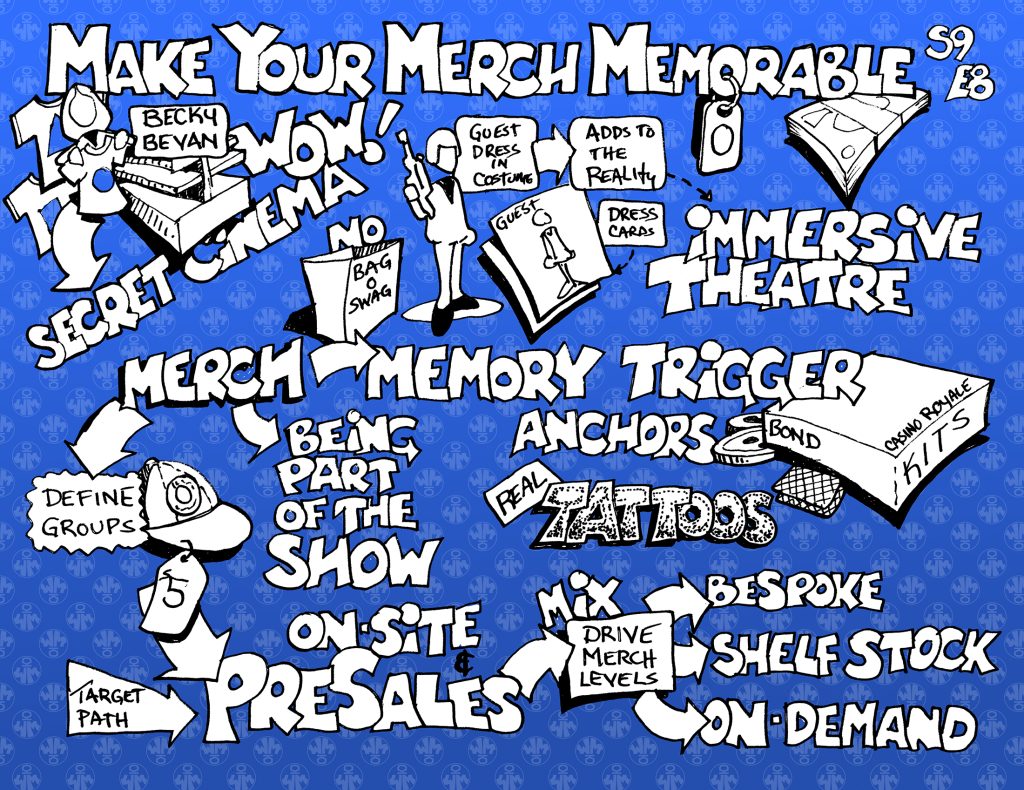
Secret Cinema is one of the UK’s great immersive success stories. Since 2007, they’ve staged immersive productions of films and IP covering everything from Star Wars and Blade Runner to Grease and Moulin Rouge, and were bought by TodayTix for over $100m in 2022. For over 8 years, Bevan built a merchandise and audience costume income stream that became one of Secret Cinema’s USPs.
“Why ask an audience to dress up? When they dress appropriately for the world, it makes for a more immersive experience. If you saw someone wearing a tracksuit in 1899 Moulin Rouge, it would break your immersion. As we say at Secret Cinema, ‘You can’t see the seams’.”
Becky Bevan
In this Campfire Bevan shares how to begin the design process, work with IP holders to produce ranges that will live on beyond your experience, and be commercially viable for both audiences and the experience itself.
We’ve distilled the conversation to 8 top techniques for making memorable merch – but to watch back the full recording or join the more detailed discussion at future Campfires, apply to join the WXO today.
1. Align Your Show Creative With Your Merch Creative
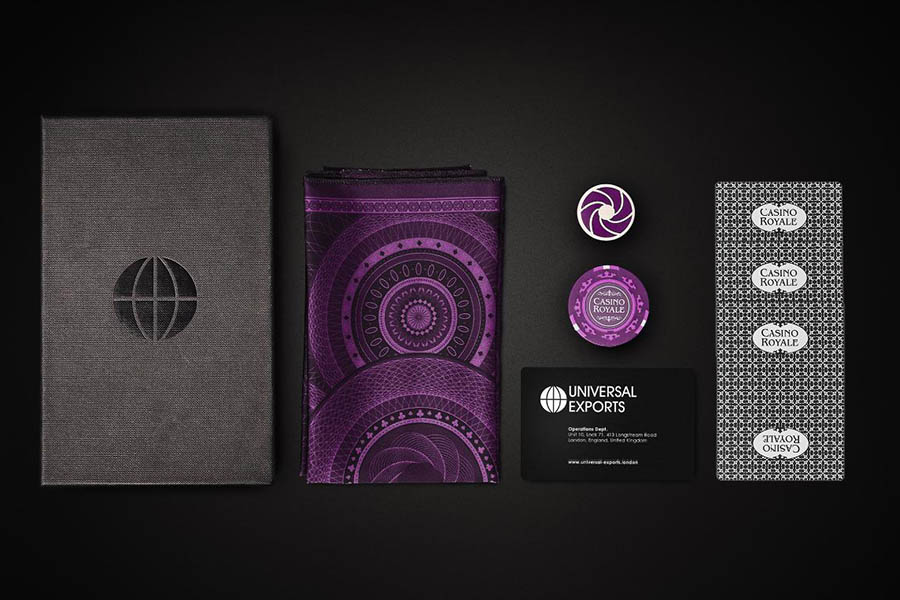
In line with Secret Cinema’s directive to not “see the seams”, your merch will be more covetable and impactful if it feels like a natural fit with the production’s narrative, rather than shoehorned in or a cash grab.
For a production of Casino Royale, for example, Bevan designed six “mission kits” distributed by Bond’s cover company, Universal Exports, that were sold online beforehand containing items that linked to actions in the world of Bond they would enter at the event. A poker chip could be used to gain entry to the casino, playing cards could be used to cheat the dealer, a coloured pin and handkerchief identified you to actors and helped them put you on the correct narrative track, and a phone number particular to your department provided an extra briefing if rang. These kits not only enhanced the experience of those who bought them, but became a collectible item in their own right – they accounted for the majority of all merch revenue for the show, and are now kept in the official Bond archive.
It was a similar story at 28 Days Later, where Bevan’s idea to lift the line “Don’t Wake Up” from the movie script as the tagline for the merch informed the overall narrative of the show. The tagline went across all social media communications and was even written in blood on the wall of the venue. When that happens, “everything clicks,” Bevan says.
2. Find The Brand Within The Brand
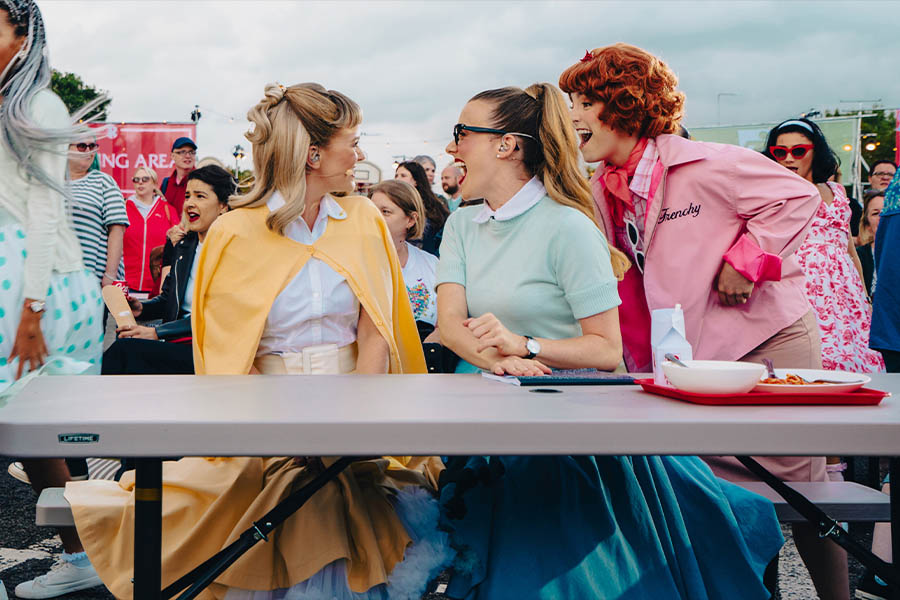
Casino Royale and 28 Days Later are both examples of what Bevan calls “finding the brand within the brand”, or zeroing in on a unique angle that has resonance for superfans but feels specific to you. This starts with research. You’ll need to become a superfan in order to understand which elements of the world, the IP and the characters are really important to fans, as it’s them you’re selling to.
You also need to embrace the IP if it’s not your own, collaborating with the studios that have approval on your concepts and product designs so they feel comfortable giving you their IP for branded merch. This conversation needs to start early in the process.
Finally, you need to try and find something different so that fans have a reason to spend their money with you rather than elsewhere. When working on the production for Grease, a decades-old film, Bevan realised that no-one had ever put the T-Birds logo on the back of their t-shirts rather than the front. And for Secret Cinema’s version of Stranger Things, she decided to create a merch range around Hawkins High, the fictional school within the show, as there wasn’t much Hawkins merch around at that time and none of it was official. This not only informed the story – everyone was told they were coming to a Hawkins High reunion – but was popular with fans, with the 13 Hawkins product lines accounting for the majority of sales across the 200 lines created.
3. Inventory Is A Balancing Act
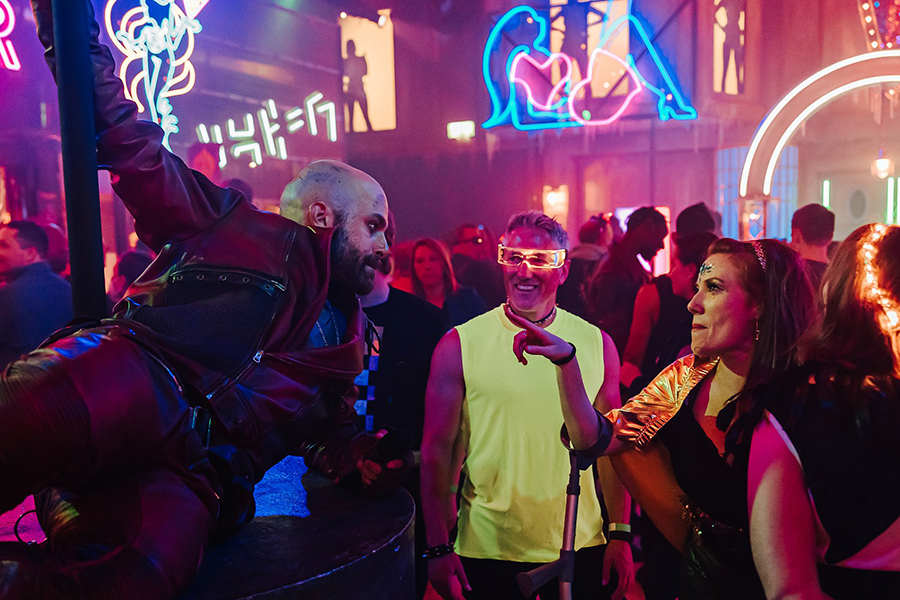
When it comes to figuring out how much merch to make, pre-order and stock ahead of your production, Bevan admits a lot of it comes down to intuition and experience, and that you can still be surprised when a certain production bucks the trend. However, there are a few tips you can use to try and stay ahead of the game and reduce waste.
Having a pre-narrative website and online shop can both help with predicting numbers, both in terms of ticket sales and which character group people are buying into most. The IP and genre of the show also have an impact – some shows will be more costume-focused, such as a period drama like Bridgerton, whereas others like Stranger Things will be more accessory-focused and might have a bigger range of items.
Choosing items with a shorter lead time, like pin badges, paper items and non-branded items, rather than focusing only on full costumes and bespoke items, can also help manage your inventory. For shows with a shorter run, reducing down the number of bespoke items can help protect your investory, too. Non-branded, off-the-shelf products will require talking to suppliers, but can be easier to order in – during the Guardians of the Galaxy production, for example, a hexagon-printed snood became a surprise hit. The sell-off period for branded merch based on IP is also much shorter than for unbranded merch, which you can use again for future productions.
Finally, time is your friend! You can save money by thinking ahead, choose to ship rather than fly, and make better decisions. It may not always be possible – 28 Days Later took 45 days from announcement to previews, with the online shop opening 3 days beforehand – but the more time you can dedicate to planning out your inventory, the better.
4. Design A Range With Multiple Entry Points
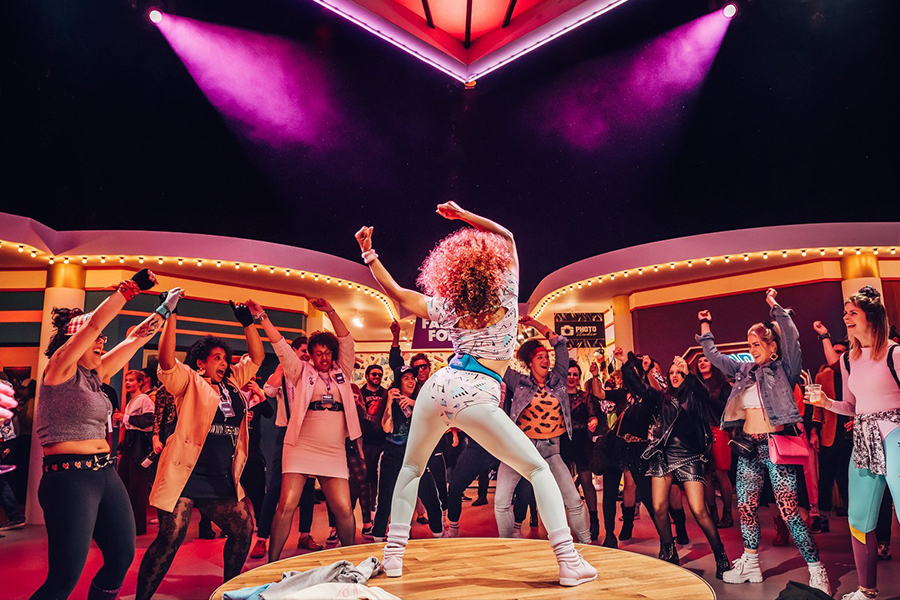
It’s crucial to make your merch accessible to all levels of participation and budgets for it to be a success. Bevan recalls a friend who didn’t buy any merch at the gift shop in Harry Potter World, as it was all so expensive – meaning that their lasting impression of the experience was choosing not to buy something.
Having a mix of costume levels is one way to address this. For Secret Cinema’s production of Bridgerton, for example, you could choose to be a “Fox” and come in a shirt and trousers if you wanted to, or to be a “Rabbit” and come in full Regency dress, which might entail buying a more expensive costume.
At Stranger Things, the dress code was themed around the 1980s soundtrack and categories like rockers, poppers and hip-hoppers, allowing people to pull from their own wardrobes but then accessorise with branded purchases like the Hawkins merch before and during the show. Genre has a big impact on this – dressing for a period piece is likely to entail more expensive costuming than a modern production.
The easiest way to allow people a way to belong whatever their budget is through the use of colour. It’s a way of defining audience groups and gives people an easy route to understand what you’re trying to do. Each Casino Royale kit was branded a different colour, for example, and for the Guardians of the Galaxy the six character tracks were assigned different colours that people could incorporate into their wardrobes. You can choose an item that matches each colour to give you a little more income, and then expand your range through simple online shops like Shopify as you get more comfortable.
5. Communicate With Your Audience Pre-Show To Build Anticipation & Drive Sales
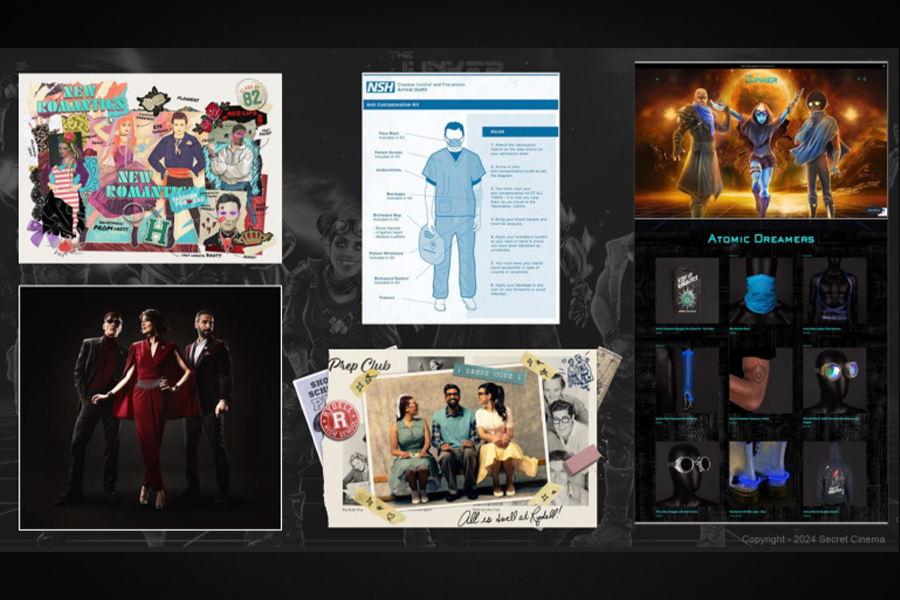
At Secret Cinema, the pre-narrative website is the first push to purchase and an essential part of their strategy (for more information on how this works, see Secret Cinema’s former Creative Producer, Andrea Moccia, on How To Turn Visitors Into Repeat Visitors). This is also where audience members can choose their “track” or character group, and access photoshoots, moodboards, diagrams and illustrations that explain what they need to wear.
These are thought out and briefed in great detail, from the make-up and pose down to body shape and gender, and each have a trading prop as well as a colour signifier. At 28 Days Later, people were given an “anti-contamination kit”, whereas for Stranger Things a colourful collage of New Romantics visuals provided information. And for Moulin Rouge, each audience member was assigned one of 900 (!) character bios created for the show. This not only builds anticipation, but also seeds sales early in the process.
6. Create Points Of Purchase Within Your World
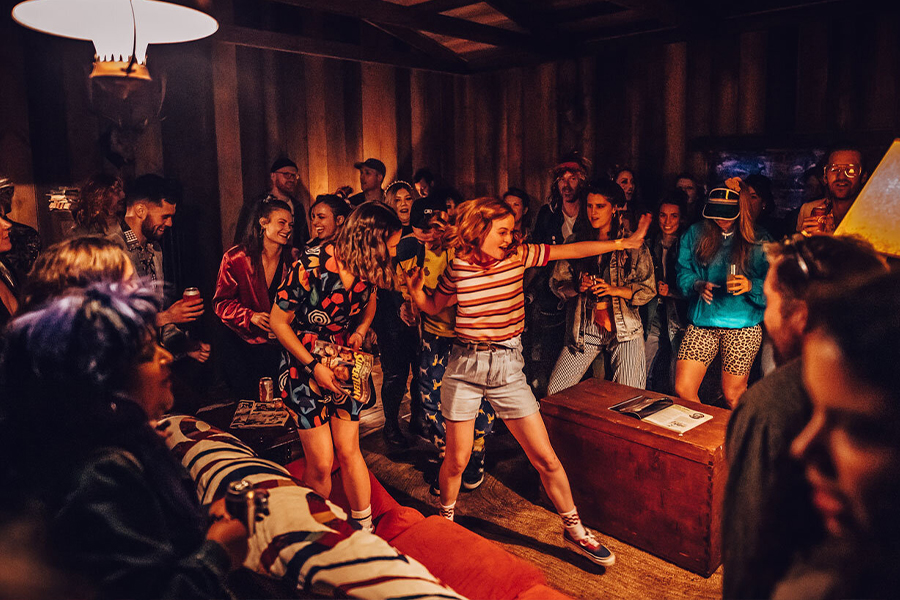
Crucially, these need to feel natural rather than forced. Embrace any opportunities for in-world marketing and sales, which will be more obvious in some productions than others. At Stranger Things, audiences spent a long time in the dark “void” section of the show before being ejected into the bright Starcourt shopping mall from the TV series, a natural opportunity to sell merchandise.
However while “exit through the gift shop”is tried and tested, if you’ve been in a show for three hours or the narrative action depends on it, you might not be in the right mindset to purchase at the end of the experience, so you’ll need to create moments to purchase throughout. Photo ops are one way to sell throughout the experience – at Stranger Things, an iconic photo set-up just like a scene from the show provided a popular purchasing moment, for example.
7. Design A “Memory Anchor” That People Will Want To Keep
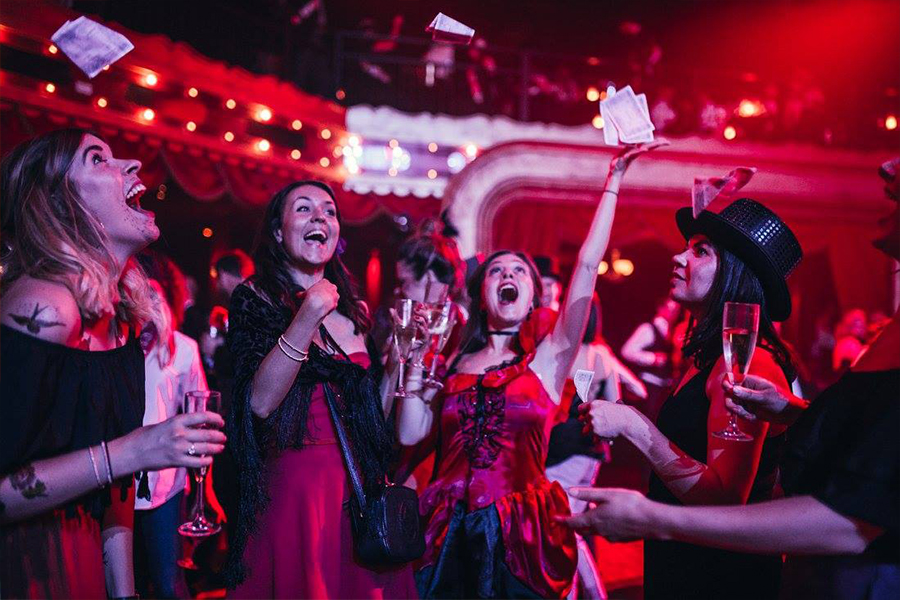
Sustainability can be tricky to manage with merch, but as well as paying attention to your supply chain and trying to use more sustainable materials, like paper, rather than pointless disposal “swag”, one of the best ways to make your merch sustainable is to create something quality people actually want to hang on to.
We’ve probably all got a decades-old band t-shirt in the back of our wardrobes, but it could be something as simple as a pin badge. The trick is to create a memory – and also an opportunity to remind them of your experience and lure them back in the future, or tell someone else about it. Bevan has even seen people getting tattoos of branded merch she’s created for productions in the past – a sure sign that you’ve designed something that will last long beyond the experience itself!
8. Know That Your Merch Is Also Your Marketing
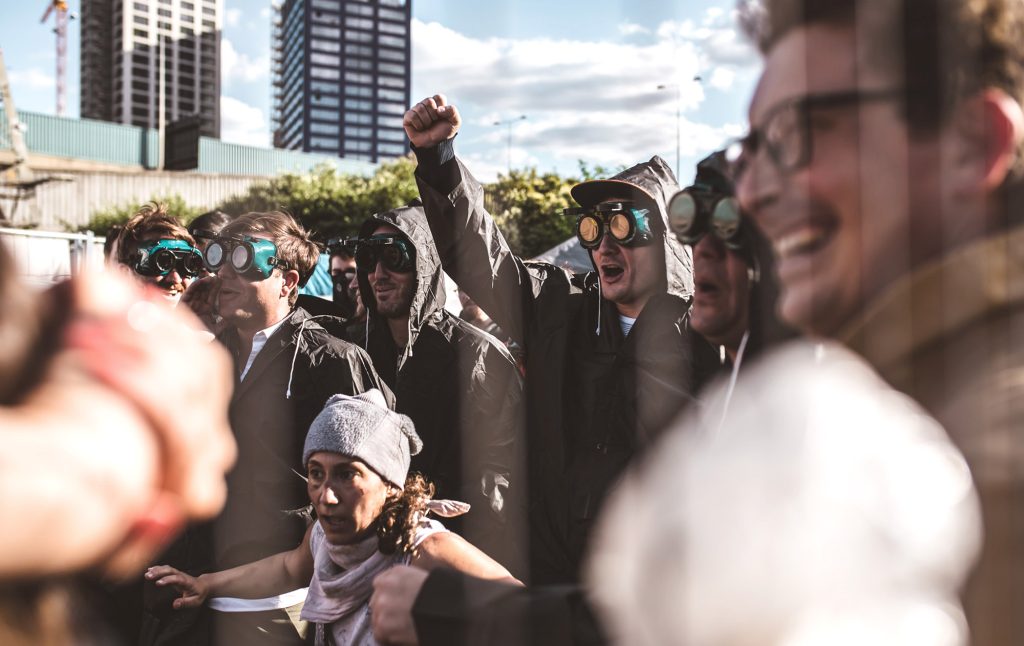
As anyone who’s ever attended – or seen people on their way to attend – a Secret Cinema show will know, you notice other people who are going long before you get there thanks to their outlandish outfits and branded merch. This not only helps you feel like part of a tribe, but acts as subtle advertising for the productions themselves out on the street, building anticipation and interest in what you’re doing.
And this doesn’t stop in the real world, but extends online, too. As well as selfies taken on the way to and during the event, Bevan has seen unboxing videos of people receiving their merch or people posting their outfits on the run-up to a show, building more buzz and signposting your experience to those who might not have been aware of it otherwise without you having to lift a finger.
The WXO Take-Out
Developing a merch and costume strategy that not only enhances your audience’s experience but which is also commercially viable is a delicate dance of creative and commercial.
You need to design for contemporary relevance, but also sticking power; create moments to purchase online and offline, pre-show and during; design for different entry points, budgets, genres and audiences; combine branded IP and non-branded products; and be flexible and intuitive in order to predict buying trends and inventory.
But when done well, your merch can not only boost your revenue, but create a memorable, marketable experience that lives on in the minds and hearts of your audience long after it ends.
So next time you’re designing an experience, ask yourself:
- What missed opportunities are there to bring merch in?
- What different entry points could you design for, both in terms of price and point in the experience?
- How can you make your merch something people will want to keep?
Want to come to live Campfires and join fellow expert experience creators from 39+ different countries as we lead the Experience Revolution forward? Find out how – and the current speaker line-up – here.

